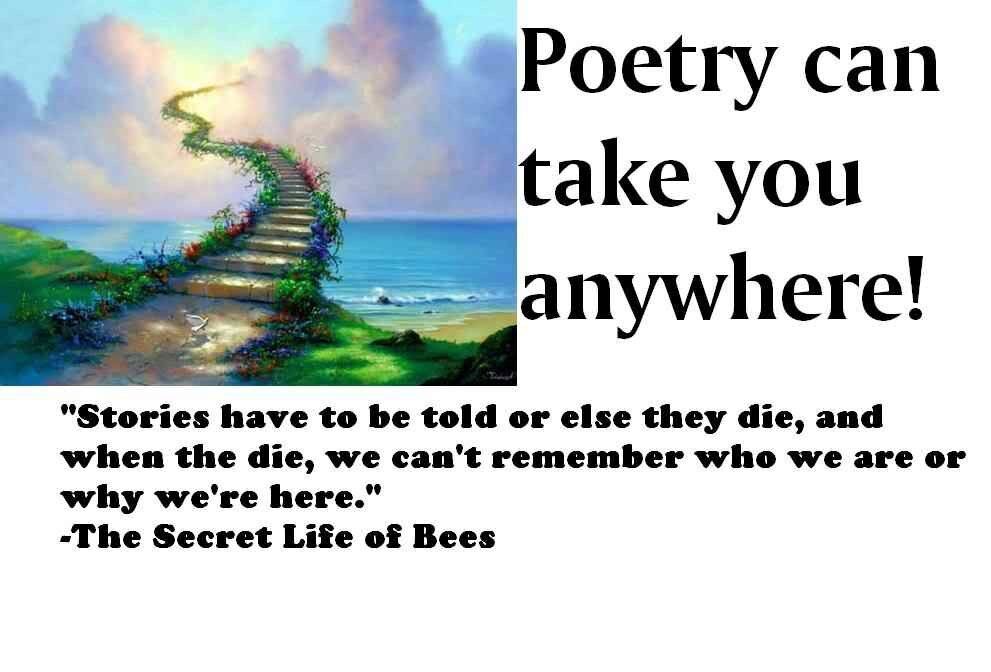Introduction:
Poetry, with its eloquent expressions and evocative imagery, transcends linguistic boundaries, inviting readers into the realm of emotions and profound thoughts. Translating poetic sentences from English to Hindi is a delicate art, akin to capturing the essence of a fleeting moment. In this blog, we embark on a journey to explore the intricacies and nuances of translating English poetic sentences into the rich tapestry of Hindi, where language becomes a vessel for the beauty of verse.
1. The Poetic Tapestry:
Poetry is a universal language that weaves emotions, thoughts, and experiences into a tapestry of words. Translating poetic sentences involves more than rendering words from one language to another; it requires the translator to delve into the poetic tapestry, preserving the rhythm, meter, and emotional resonance of the original composition.
2. Understanding Poetic Devices:
English poetry often employs a variety of poetic devices such as rhyme, meter, alliteration, and metaphor. Translating these devices into Hindi involves a deep understanding of the structural and stylistic elements unique to each language. The challenge lies in maintaining the musicality and rhythm while staying true to the linguistic nuances of Hindi.
3. Preserving Rhythm and Meter:
The heartbeat of poetry is its rhythm and meter. English poems may follow specific rhythmic patterns, such as iambic pentameter or free verse. Preserving this rhythm in Hindi involves a meticulous selection of words and phrasing to mirror the cadence of the original, ensuring that the translated verses echo the poetic heartbeat.
4. Rhyme and Its Hindi Counterpart:
Rhyme, a cherished element in English poetry, adds a melodic quality to verses. Translating rhyme into Hindi demands creativity and linguistic finesse, as Hindi has its own rich tradition of rhyme schemes. Striking a balance between maintaining the rhyme and staying true to the meaning is a delicate task that requires both linguistic skill and poetic sensibility.
5. Cultural Context and Imagery:
Poetry often draws on cultural references and vivid imagery. Translators must be attuned to the cultural nuances embedded in English poetic sentences and find resonant equivalents in Hindi. This involves not only a deep knowledge of both cultures but also a keen awareness of the emotional impact that specific images may carry in different linguistic contexts.
6. Transcending Literal Translation:
Poetry thrives on metaphors, similes, and allegories, which may not always have direct equivalents in another language. Translators must transcend literal translation, opting for interpretations that capture the essence of the metaphorical language. This allows the beauty of the poetic image to blossom anew in the translated verses.
7. Rhetorical Devices and Their Hindi Expressions:
English poetry often employs rhetorical devices such as hyperbole, anaphora, or apostrophe. Translating these devices into Hindi requires not only linguistic dexterity but also an understanding of how these devices function within the cultural and literary context of Hindi poetry. The challenge lies in conveying the rhetorical impact while adapting to the linguistic nuances of Hindi.
8. Preserving Ambiguity and Nuance:
Poetry thrives on ambiguity and nuanced expressions. Translators must navigate the delicate balance of preserving the ambiguity inherent in poetic verses while ensuring clarity in the target language. This involves choosing words and phrasings that maintain the layers of meaning without sacrificing coherence.
9. Sensitivity to Sound and Pronunciation:
The sonorous quality of language contributes significantly to the beauty of poetry. Translators must be attuned to the phonetic aspects of both English and Hindi, ensuring that the translated verses evoke similar auditory experiences. The play of sounds, consonance, and assonance must be carefully considered to capture the sonic allure of the original poem.
10. Poetic License in Translation:
Translating poetry allows for a certain degree of poetic license. While staying faithful to the core meaning, translators may need to adapt expressions, reorder words, or introduce new elements to evoke the same emotional impact in Hindi. This flexibility is essential for preserving the soul of the poem in translation.
11. Exploring Cultural Poetic Forms:
Hindi poetry boasts a rich array of poetic forms such as Doha, Chaupai, and Ghazal. Translating English poetic sentences may involve exploring these traditional forms to encapsulate the beauty of the original composition. Adapting verses to suit the nuances of specific poetic forms adds an additional layer of cultural depth to the translation.
12. Transcreation for Emotional Resonance:
Beyond literal translation, transcreation becomes a tool for capturing the emotional resonance of the original poem. This involves not only linguistic adaptation but also a creative reinterpretation that ensures the emotional impact transcends cultural and linguistic boundaries. The translated poem should evoke a similar emotional response as the source material.
13. Translating Poetic Symbolism:
Symbolism is a powerful element in poetry, and each culture ascribes unique meanings to symbols. Translators must decode the symbolic language used in English poems and find culturally resonant equivalents in Hindi. This requires a nuanced understanding of the symbolic lexicon inherent in both languages.
14. Adapting Poetic Forms to Hindi Metrics:

English and Hindi have distinct poetic metrics, and adapting poetic forms to suit the metrics of the target language is an intricate task. For example, translating a Shakespearean sonnet into Hindi involves not only linguistic skill but also a keen sense of how Hindi poetic forms can encapsulate the essence of the sonnet structure.
15. Incorporating Regional Dialects and Vernacular:
Hindi, with its rich regional diversity, offers a palette of dialects and vernacular expressions. Translators may choose to incorporate regional flavors to add authenticity to the translated poem. This introduces an additional layer of cultural richness, making the poem feel more rooted in the linguistic landscape of Hindi.
16. Synchronizing with the Rasa Aesthetics:
Hindi poetry often adheres to the concept of Rasa, which represents the aesthetic experience invoked by a work of art. Translators must synchronize the emotional and aesthetic dimensions of the English poem with the Rasa aesthetics of Hindi, ensuring that the translated verses resonate with the intended emotional flavor.
17. Cultural Sensitivity in Translation:
Cultural sensitivity is paramount in translating poetic sentiments. Certain themes and metaphors may carry different connotations in English and Hindi. Translators must navigate these sensitivities, ensuring that the translated poem is culturally respectful while staying true to the emotive core of the original composition.
18. Versatility in Expressing Emotions:
English and Hindi, while both rich in emotional expressions, may prioritize different emotions or express them in distinct ways. Translators must be versatile in conveying a spectrum of emotions, ensuring that the translated poem encapsulates the full range of feelings embedded in the original verses.
19. Capturing the Subtleties of Nature Poetry:
Nature poetry often relies on specific flora, fauna, or landscapes that may vary between English and Hindi contexts. Translators must be meticulous in capturing the subtleties of nature imagery, choosing words that resonate with the natural beauty and evoke similar sensory experiences in the target language.
20. Collaboration with Poets and Literary Scholars:
In the pursuit of poetic translation excellence, collaboration with poets and literary scholars is invaluable. Their insights into the nuances of both languages, poetic traditions, and cultural aesthetics enrich the translation process, elevating the final product to a harmonious fusion of linguistic and poetic brilliance.
21. Translation as an Interpretive Act:
Translating English poetic sentences into Hindi is not a mechanical task but an interpretive act. Each translator brings their unique perspective, experiences, and poetic sensibilities to the process. The beauty of translation lies in the varied interpretations that can emerge, each contributing to the evolving landscape of poetic expression.
22. The Role of Intuition in Poetic Translation:
Intuition plays a significant role in poetic translation. Beyond linguistic rules and cultural knowledge, translators must rely on their intuitive sense of the poetic to capture the ineffable essence of verses. This intuitive connection allows for a more profound engagement with the source material, resulting in a translation that transcends the limitations of language.
23. Technology in Poetic Translation:
While technology can aid in the translation process, it is crucial to use it judiciously in poetic translation. Automated translation tools may struggle with the nuanced and emotive aspects of poetry. Translators should leverage technology as a complement to their skills, utilizing it for efficiency while retaining the human touch in crafting evocative translations.
24. Poetry Translation Workshops and Collaborations:
Participation in poetry translation workshops and collaborative projects fosters a sense of community among translators. It provides a platform for sharing experiences, exploring diverse approaches to translation, and collectively enriching the understanding of the intricate dance between language and poetic expression.
25. Publishing Bilingual Collections:
Bridging the linguistic and poetic realms, bilingual collections that feature both the original English poems and their Hindi translations offer readers a comprehensive experience. This format allows enthusiasts to appreciate the beauty of the original verses while delving into the nuanced expressions that emerge in the translated poetry.
26. Education and Training for Poetic Translators:
Recognizing the specialized nature of poetic translation, educational initiatives and training programs can nurture a new generation of translators. These programs should encompass linguistic proficiency, poetic analysis, cultural studies, and collaborative experiences, empowering translators to navigate the intricate terrain of translating poetry.
27. Translation as a Catalyst for Cultural Exchange:
Poetic translation serves as a catalyst for cultural exchange, fostering a deeper understanding between English and Hindi-speaking communities. Through the medium of poetry, shared emotions, experiences, and reflections transcend linguistic boundaries, creating a bridge that connects diverse cultures and enriches the global literary landscape.
28. Celebrating the Diversity of Poetic Expression:

As translators embark on the enchanting journey of translating English poetic sentences into Hindi, they contribute to the celebration of diversity in poetic expression. Each translation becomes a unique rendition, offering readers an opportunity to explore the beauty of language, culture, and emotion through the lens of poetry.
Conclusion:
Translating English poetic sentences into Hindi is a voyage through the realms of language, emotion, and cultural aesthetics. It is an art form that requires not just linguistic mastery but a profound connection to the poetic spirit. As translators navigate the delicate balance between fidelity to the original and creative reinterpretation, they unveil the timeless beauty of poetry in a new linguistic and cultural landscape. In this intricate dance of words, translation becomes a transformative act, inviting readers to savor the rich tapestry of emotions woven into the fabric of poetic expression. Through the alchemy of translation, English and Hindi poetry converge, transcending individual languages to resonate with the universal human experience.


 Afrikaans
Afrikaans Albanian
Albanian Amharic
Amharic Arabic
Arabic Armenian
Armenian Azerbaijani
Azerbaijani Basque
Basque Belarusian
Belarusian Bengali
Bengali Bosnian
Bosnian Bulgarian
Bulgarian Catalan
Catalan Cebuano
Cebuano Chichewa
Chichewa Chinese (Simplified)
Chinese (Simplified) Chinese (Traditional)
Chinese (Traditional) Corsican
Corsican Croatian
Croatian Czech
Czech Danish
Danish Dutch
Dutch English
English Esperanto
Esperanto Estonian
Estonian Filipino
Filipino Finnish
Finnish French
French Frisian
Frisian Galician
Galician Georgian
Georgian German
German Greek
Greek Gujarati
Gujarati Haitian Creole
Haitian Creole Hausa
Hausa Hawaiian
Hawaiian Hebrew
Hebrew Hindi
Hindi Hmong
Hmong Hungarian
Hungarian Icelandic
Icelandic Igbo
Igbo Indonesian
Indonesian Irish
Irish Italian
Italian Japanese
Japanese Javanese
Javanese Kannada
Kannada Kazakh
Kazakh Khmer
Khmer Korean
Korean Kurdish (Kurmanji)
Kurdish (Kurmanji) Kyrgyz
Kyrgyz Lao
Lao Latin
Latin Latvian
Latvian Lithuanian
Lithuanian Luxembourgish
Luxembourgish Macedonian
Macedonian Malagasy
Malagasy Malay
Malay Malayalam
Malayalam Maltese
Maltese Maori
Maori Marathi
Marathi Mongolian
Mongolian Myanmar (Burmese)
Myanmar (Burmese) Nepali
Nepali Norwegian
Norwegian Pashto
Pashto Persian
Persian Portuguese
Portuguese Punjabi
Punjabi Romanian
Romanian Russian
Russian Polish
Polish Samoan
Samoan Scottish Gaelic
Scottish Gaelic Serbian
Serbian Sesotho
Sesotho Shona
Shona Sindhi
Sindhi Sinhala
Sinhala Slovak
Slovak Slovenian
Slovenian Somali
Somali Spanish
Spanish Sundanese
Sundanese Swahili
Swahili Swedish
Swedish Tamil
Tamil Tajik
Tajik Telugu
Telugu Turkish
Turkish Ukrainian
Ukrainian Urdu
Urdu Uzbek
Uzbek Thai
Thai Vietnamese
Vietnamese Welsh
Welsh Xhosa
Xhosa Yiddish
Yiddish Yoruba
Yoruba Zulu
Zulu